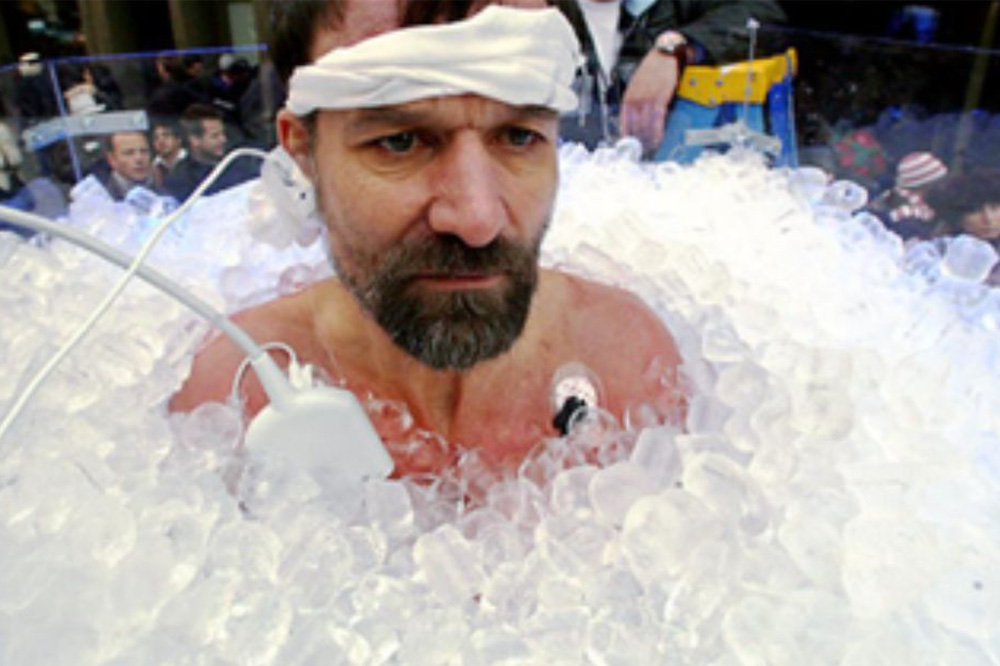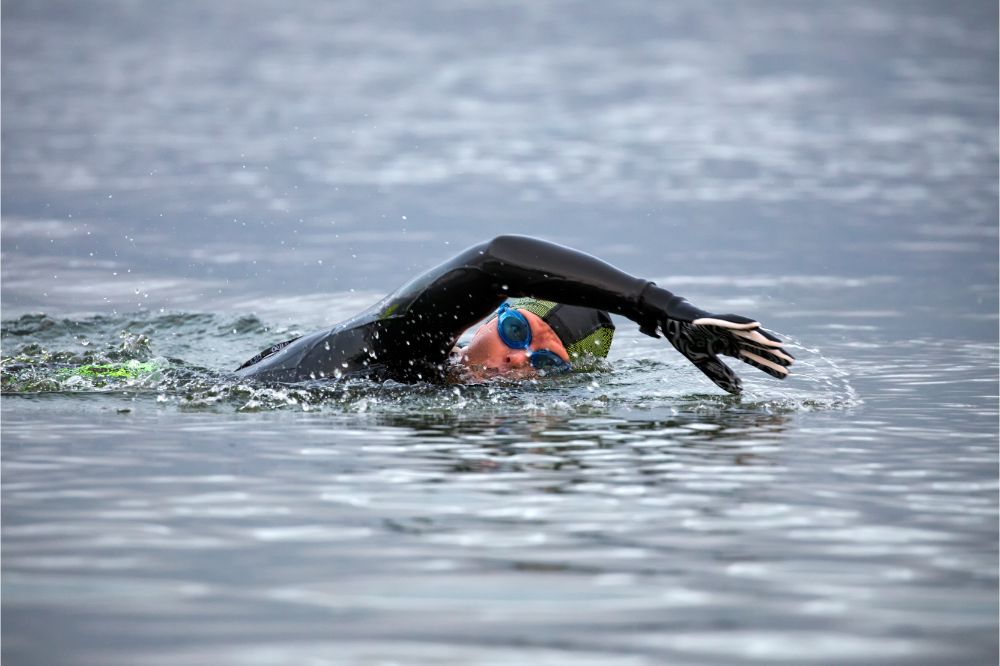Every winter, we see images of people in Nordic countries swimming in ice-cold water, seemingly perfectly comfortable in swim caps and bathing suits. So whether you are interested in taking the Polar Bear Plunge, or getting the benefits of regular cold water swimming, let’s learn what is ice swimming and some of the risks and benefits involved.
What is Ice Swimming?
Ice swimming is a specific form of cold water or winter swimming. Ice swimming usually requires:
Cold Air Temperatures
Ice swimming is usually performed outdoors, in places or seasons where the air temperature is at or below freezing.
Cold Water Temperatures
Traditionally, ice was cut and cleared from a body of water to create space for swimming. Today, ice swimming is defined by water temperatures at or below 5°C or 41°F.
Formal ice swimming competitions, and informal ice swimming meets, often limit the equipment swimmers are allowed to wear, allowing swimsuits, goggles, and a swim cap but forbidding wetsuits.
Ice swimmers should use extreme caution when swimming in manmade pools or ocean water in icy conditions. Chlorine and salt allow water to remain liquid at sub-zero temperatures, making it much colder and more dangerous than naturally icy water and increasing the risks of hypothermia and frostbite.
Effects of Ice Water Immersion
Ice swimming has dramatically different effects on people, so it’s important to group ice swimmers into different categories:
- Untrained healthy people
- Untrained people with underlying health concerns
- Experienced ice swimmers
Over time and with practice, the body adapts to cold water exposure, so experienced ice swimmers have different physiological reactions than untrained people. Likewise, people new to ice swimming have different risks and responses than people who have adapted to it.
It’s worth noting that ice swimming is almost always done following a sauna in many Nordic countries. The sudden and dramatic change in body temperature has different physiological effects than ice swimming alone.
For most people, immersion in cold water follows an established progression:
1. Initial Cold Shock
For the first 2-3 minutes of immersion, the body experiences rapid changes in heart and respiration rates. After that, the gasp reflex is usually followed by hyperventilation (deep, rapid breathing), tachycardia (accelerated heart rate), and cooling of the skin.
2. Short-term exposure
After 2-3 minutes of cold water immersion, the breath and heart rates stabilize. In addition, the body experiences superficial neuromuscular cooling.
3. Long-Term Exposure
After 30 minutes of immersion, the body may progress into hypothermia, experiencing shivering, fatigue, confusion, and clumsiness.
4. Afterdrop
For many people, the core body temperature may continue to drop even after being removed from the water and re-warming has begun. Afterdrop is often caused by cold blood from the extremities circulating to the organs and further cooling them and may cause unconsciousness or other adverse effects.
Risks of Cold Shock
The first two minutes of cold water immersion are often the most hazardous for untrained swimmers and those with underlying cardiac and respiratory conditions. The urge to gasp is an uncontrollable reflex and gasping, combined with rapid breathing and lung contractions, increases the risk of drowning.
People with underlying cardiovascular conditions are also at most risk during this time, and the initial shock phase accounts for most cold water deaths. Experienced cold water swimmers become more resistant to the initial cold shock reaction and recover more quickly.
Risks of Hypothermia
After the first two minutes of cold water immersion and the body has adjusted, the next greatest risk in ice swimming is hypothermia. Hypothermia is a serious condition, but the risks are unpredictable, caused by a range of factors, including:
Length of Exposure
For some swimmers, the effects of hypothermia can be felt in as few as 15 minutes. However, the length of time a person can tolerate cold water is strongly affected by the rest of the risk factors, and different people can tolerate more prolonged exposure to cold water.
Body Fat Percentage
Body fat acts as an insulator and can protect the body’s core temperature. There are many case studies of overweight ice swimmers who never become hypothermic.
Physical Activity
Vigorous exercise may contribute to heat loss when ice swimming, as the exertion increases heart and respiratory rates, causing the body to lose more heat. Exposure to cold air and water also causes convective heat loss to the surrounding air and water molecules. However, some research suggests that periods of physical activity increase core body temperature and have a protective effect against hypothermia.
Experience
Coldwater training and experience help make the body more resilient to hypothermia, but they also make the swimmer more aware of their own physical responses and risk factors.
Whatever your experience level, ice swimmers should always be aware of these signs of hypothermia and get out of the water when they experience:
- Shivering
- Fatigue
- Confusion
- Clumsiness
- Slurred speech
Benefits of Ice Swimming
You may be asking why ice swimmers undergo all these risks, year after year if ice swimming is so dangerous. Here are some of the scientifically proven benefits of ice swimming.
- Lowers blood pressure
- Decreases triglycerides
- Increases insulin sensitivity
- Releases norepinephrine
- Increases cortisol
- Increases leucocytes
- Increases monocytes
- Reduce frequency of illness and infections
- Improve mood and reduce depression
Conclusion
Ice swimming is a simple, affordable, easy way to access the body’s powerful capabilities to care for and heal itself, but it is not without risks. Therefore, it is important to start gradually and build cold tolerance over time so that your body has time to adapt. Adaptation reduces the cold shock response, increases beneficial hormones and stress responses, and allows you to learn your own limits to ice swim more safely for more extended periods.
Disclaimer: You should see a doctor prior to starting with cold training and research the risks involved.











Discussion